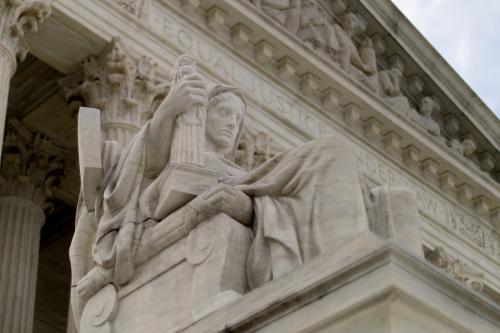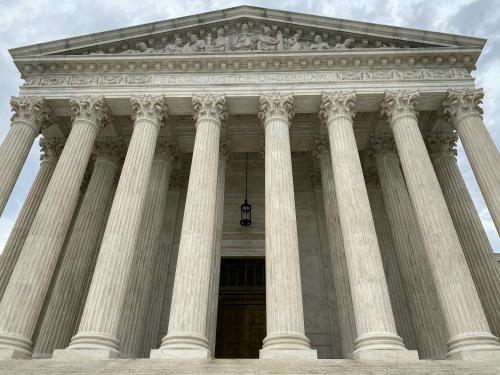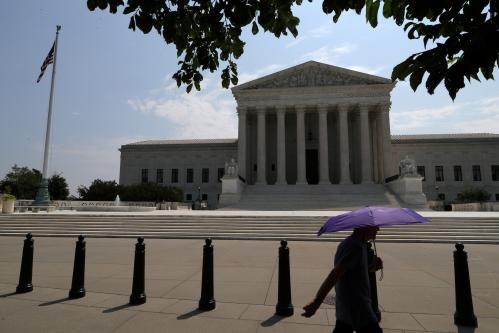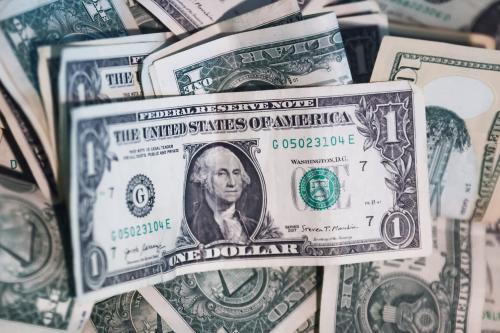With front pages devoted to the continuing spread of the coronavirus and with the election so close, it is easy to forget about the ongoing controversy over Trump’s taxes. It is even easier to think that the case no longer matters since an anonymous leaker provided the New York Times with the tax returns sought by New York District Attorney Cyrus Vance, and the Times is sharing that information with the public. Still, it is worth noticing that a three-judge panel of the Second Circuit’s Court of Appeals has just dealt Donald Trump another blow in his effort to prevent his tax accountants, Mazars, from giving his tax returns and related documents to a New York grand jury. The panel judges unanimously agreed with the District Court’s determination that Trump’s effort to prevent the release of his records fails because his second amended complaint (or SAC) failed to state a claim on which relief could be granted. Yet, as both Trump and Vance realize, the grand jury’s ability to get the documents it subpoenaed matters almost as much as it did before the Times’ stories appeared.
Trump has repeatedly asserted that the documents the Times has are false. But if the returns the Times has are genuine and their reporting on them is accurate, they describe situations where Trump’s efforts to secure tax advantages are so aggressive that they come close to and may cross the line that separates the legal from illegal. However, standing alone the information the Times disclosed does not prove illegality. The Mazars subpoena, however, demands documents that might. These include not just Trump’s tax returns, but supporting documents which in conjunction with the returns could show that Trump or members of his family knowingly committed crimes. Information Vance could acquire might reveal which lenders, including foreign interests, loaned Trump money on what terms, and whether Trump’s accountants cautioned Trump about the questionable legality of deductions he claimed. Also, having verified copies of the original documents might be essential should Vance want to introduce any of these documents in a criminal prosecution.
A brief recap
Here is where things stand. The Supreme Court in Trump v. Vance determined that for the most part Trump should be treated like any ordinary litigant seeking to quash a subpoena and that he has available to him defenses like overbreadth and unwarranted harassment. Although the Court said that judges should be “meticulous” in addressing Trump’s claims, this does not mean they should use a stricter standard in evaluating them. The Court recognized a few special defenses a president might invoke relating to attempts to coerce the president or otherwise infringe on his Article II powers, but beyond boilerplate references to Article II, Trump’s attorneys have not rested their objections to the subpoena on Article II grounds. Rather they claim the subpoena is overbroad and harassing. It is at this point that the litigation devolves into a dispute which only lawyers can love, and we are in a situation where the litigation will end only if Vance prevails. The most Trump can gain is further delay.
Into the legal weeds: (12)(b)(6) motions
Vance could have disputed Trump’s claims that the grand jury subpoena was overbroad and harassing and perhaps disposed of the claims quickly through summary judgment, but chose not to do this, perhaps because it would have allowed some discovery. Instead his attorneys moved, under Federal Rule of Civil Procedure 12 (b) (6) to dismiss Trump’s complaint for “failing to state a claim on which relief could be granted.” The idea behind the rule is that if a complaint is on its face deficient, there is no reason to proceed and impose further litigation costs on a defendant.
Courts do not want to deny claimants their day in court, so the test for dismissing claims before trial is stringent. In ruling on 12(b)(6) motions, courts are told to (1) construe the complaint in the light most favorable to the claimant, (2) assume the facts alleged in the complaint are true, and (3) treat all reasonable inferences that can be drawn from the pleadings in the plaintiff’s favor. At one time, these conditions were hard to meet, and few 12(b)(6) dismissals were granted. Conley v. Gibson, 355 U.S. 41, 1957, the controlling precedent, held that a defendant could not prevail “unless it appears beyond doubt that the plaintiff can prove no set of facts in support of his claim which would entitle him to relief.” But in two more recent cases, this standard was loosened considerably. Now the test is one of facial plausibility. A claim is plausible enough to avoid dismissal “when the pleaded factual context allows the court to draw the reasonable inference that the defendant is liable for the misconduct alleged” Ashcroft v. Iqbal, 556 U.S. 662 (2009). Labels asserting legal conclusions are insufficient even if they sound like assertions of fact. Also insufficient are ‘naked assertions” devoid of further factual enhancement. Plausibility does not mean that a claim must appear more likely than not to be valid, but it does mean that that the mere possibility that a claim is valid will not thwart a motion to dismiss.
In determining whether to grant a 12(b)(6) motion, judges are expected to look beyond the language of the complaint, drawing on their experience and common sense. The likelihood of an innocent explanation for facts pleaded is one factor judges may consider. Thus, in Bell Atlantic Corp v. Twombly, 550 U.S. 544 (2007), the case that “retired” the Conley standard, proving parallel behavior by six telephone companies, although consistent with a claim of conspiracy, was insufficient to save the complaint. The companies’ similar behavior, the Court reasoned, could have resulted from each company acting separately in its own interest. Evidence suggesting improper communications between the companies should have been incorporated in the complaint.
Trump’s arguments
The Second Circuit panel saw the case much like the district judge did, but only the former’s views matter. This is because determining whether a complaint is sufficiently well pled to survive a motion to dismiss raises only questions of law, and an appellate court has before it the same information the trial court had when it reached its judgment. Hence the Second Circuit heard the case de novo, and should the Supreme Court accept Trump’s appeal and reach the merits of the case, it too will render a de novo judgment.
Trump’s attorneys claimed that the grand jury subpoena should be quashed because it was both overbroad and issued in bad faith. The linchpin for these positions was their assertion that the Vance grand jury’s focus was only on payments Trump was alleged to have made in 2016 to buy the silence of Stormy Daniels and Karen McDougal, regarding sex they claimed to have had with Donald Trump when his wife, Melania, was pregnant. Incorporated as evidence in the complaint was a New York Times article reporting that a grand jury was looking into the alleged payments. Also incorporated was a subpoena issued prior to the Mazars subpoena to the Trump Organization. The records this subpoena requested seemed largely, if not entirely, related to the alleged hush money payoffs.
If the grand jury was only investigating crimes related to these payoffs, the overbreadth claim is a strong one since the Mazars subpoena requested Trump’s tax returns going back to 2011 and records relating to a wide swath of Trump’s businesses, most of which have no conceivable relationship to a 2016 attempt to buy Daniels’s and McDougal’s silence. But even if the grand jury investigation was not so limited, Trump’s attorneys argued that overbreadth was shown by requests for documents from places in the Trump business empire located far beyond the jurisdiction of New York courts and New York grand juries. Similarly casting doubt on the subpoena’s bona fides, or so Trump’s attorneys argued, was that the Vance record request was almost identical to the requests made by the House Oversight Committee in a subpoena it issued—the only difference being that the grand jury subpoena also requested Trump’s tax returns, records that a different House committee had been in vain seeking. The icing placed on this cake was a lengthy discussion of reasons why the Oversight Committee might want the records it sought, all relating to possible law-making of no concern to a state grand jury. The complaint also mentions a Vance statement explaining the overlap of the grand jury and House subpoenas. Vance’s initial explanation for copying the Oversight Committee’s subpoena was that he had done this to promote efficiency by making it easier for Mazars to comply since they only had to provide documents that they had, presumably, already identified.
Trump’s bad faith allegation rests on the contention that Vance had to have known that the Mazars subpoena was not well tailored to the grand jury investigation. In support, Trump’s lawyers cite much of the same material they offered in support of the overbreadth claim. They also leaned heavily in their briefs on the fact that the Mazars subpoena was issued soon after the Trump Organization had thwarted Vance’s effort to get Trump’s tax returns from them by, in what must have been an embarrassing moment for Vance, correctly noting that the subpoena served on the Organization did not request tax returns. Trump’s attorneys argued that the timing showed that the Mazars subpoena was best seen as an effort to retaliate against the Trump Organization for its intransigence.
How the panel saw the issues
Neither the District Court nor the Circuit Court panel bought any of Trump’s arguments, although only the panel’s analysis matters because it heard the case de novo. The panel held that even though a plaintiff’s well pled allegations must be taken as true in deciding a 12(b)(6) motion, Trump had not pled enough facts which, if taken as true, would justify proceeding. The panel refused to treat Trump’s charges that the Mazars subpoena was overbroad and issued in bad faith as pled facts because it correctly regarded them as merely labels for legal conclusions. Hence the panel’s opinion focuses on other claims and allegations found in the pleadings or incorporated by reference.
The Second Circuit panel found it easy to dispose of Trump’s assertion that the grand jury investigation was concerned only with hush money payments. As noted above, this allegation was the linchpin on which most of Trump’s case rested. If it were true, a subpoena seeking tax records beginning six years before the alleged payoff and encompassing records from Trump-controlled properties world-wide would be shockingly overbroad, and it would be hard to see it as anything other than a “fishing expedition” designed to harass the president.
The panel, however, was not persuaded, nor should they have been. Trump’s attorneys could not know the exact scope of the grand jury investigation, and they equivocated in suggesting that the grand jury investigation was limited to the alleged payoffs. Moreover, the New York Times article that Trump’s attorneys quoted to support its argument that the grand jury was only looking into hush money payoffs went on to report, in a portion Trump’s attorneys did not mention, that the grand jury might be investigating other matters as well. If these considerations were not enough to prove the implausibility of this aspect of Trump’s case, the panel judges knew from experience that grand jury investigations often expand beyond their initial focus. Hence the injunction to treat a complaint’s factual assertions as true when deciding a 12(b)(6) motion did not save this assertion because it failed the plausibility test.
The panel found it similarly easy to dispose of the notion that a retaliatory motive could be inferred from the fact that the Mazars subpoena was issued soon after the Trump Organization had successfully stymied Vance’s effort to secure from them Trump’s tax returns. The panel saw nothing sinister or unusual when a grand jury which cannot get documents from one source turns to another source to provide them. Trump’s argument on this point seems so self-evidently weak that it is hard to understand why it was made.
The panel was similarly unpersuaded that the breadth of the subpoena was sufficient to make out a plausible claim. Although the grand jury subpoena requested nine years of Trump tax returns and numerous records from Trump’s businesses, including businesses located in other states and foreign nations, nothing about the subpoena’s targets necessarily suggests overbreadth. Grand jury subpoenas, as the panel noted, often have a broad reach because a grand jury cannot be certain where information relating to its investigations might reside. Not only can grand juries seek records from out-of-state and foreign entities, but in this case there was a substantial New York nexus to the material sought because the Trump Organization, which oversees Trump’s business interests world-wide, is headquartered in New York City.
The last arrow in Trump’s quiver, and the one that is most on target, is that the complaint makes out a plausible claim of overbreadth and/or bad faith because these conclusions are inferable from the fact that the Mazars subpoena largely copies the requests made by the House Oversight Committee. As Justice Alito dissenting in Trump v. Vance wrote, “it would be quite a coincidence if the records relevant to an investigation of possible New York criminal law just happened to be almost identical to the records thought by congressional committees to be useful in considering federal legislation.” Moreover, if my recollection isn’t idiosyncratic, Vance’s decision to issue the Mazars subpoena seemed like a “gotcha” moment at the time. He seemed to be telling the president that even if he could successfully stonewall congressional committees seeking his business records and tax returns, he, Vance, would ensure that they would not stay hidden.
As a matter of law, however, this does not seem enough. A court is unlikely to assume that a grand jury subpoena was improperly issued when nothing on the face of the subpoena suggests an absence of legal justification for the material sought. Had Al Capone, for example, resisted a subpoena for his tax preparation records by arguing that the true motive behind the government’s request was to find a crime it could use to punish him for murders it could not prove, his argument would have been unavailing, even if it was most likely correct. Moreover, under New York Law, which is controlling in this case, there is a strong presumption that grand jury subpoenas are properly issued. Standing pretty much alone, speculation about why Vance sought to acquire the same records as two House committees is not enough to overcome that presumption.
On the appeal to the Supreme Court
I see no good legal argument for why the Supreme Court should accept Trump’s appeal.
The decision to grant Vance’s 12b)(6) motion is, in my view, sound, although, as is often the case, different judges might have reached different conclusions. In this connection, it is, however, fair to point out that every judge charged with evaluating the motion to dismiss was appointed by a Democratic president. Still, the Supreme Court should refuse to hear Trump’s appeal. The Supreme Court does not exist to serve as a third assessor of what factual assertions imply for litigation, even if the question is one of law which the Court would be deciding de novo. Rather the Supreme Court exists to resolve questions of legal and constitutional interpretation. Nothing in the complaint seeks to change or elaborate on the Iqbal precedent, and the complaint ignores the Supreme Court’s invitation to argue on remand that the subpoena was designed to coerce the president or otherwise interfere with his Article II functions. Absent a constitutional claim, New York law controls the decision. The Supreme Court is, if anything, less able than the district and circuit courts to interpret New York law because it has fewer occasions to do so.
True, a case can be made that because the president is involved, the Supreme Court should resolve the issue regardless. As a general matter, the argument is a strong one because Supreme Court resolution ordinarily lends legitimacy to decisions involving the chief executive, particularly when, as in U.S. v. Nixon and Clinton v. Jones, the Court is unanimous in ordering a president to do something he resists doing. In this case, however, no matter what decision the Court might reach, there would almost certainly be dissenters, and if the Court differs from what the four judges who have weighed in so far have ruled, many would see this as a political rather than a legal decision. Also, a Supreme Court denial of Vance’s 12 (b)(6) motion would not end the litigation. Rather the case would be remanded for further proceedings, most likely resulting in Vance prevailing on a motion for summary judgment. But the additional delay might extend the case beyond the limits of the grand jury’s term, and/or some people might avoid prosecution for their alleged crimes because statutes of limitations have expired. Both justice and prudence counsel against further proceedings.
In Trump v. Vance, the Supreme Court held, with a few now inapplicable exceptions, that Donald Trump should be treated like any other citizen. If he is, this lawsuit will soon end, and Mazars will give the grand jury the documents it seeks.
The Brookings Institution is committed to quality, independence, and impact.
We are supported by a diverse array of funders. In line with our values and policies, each Brookings publication represents the sole views of its author(s).








Commentary
Trump’s tax returns: Why the Supreme Court should end things now
October 19, 2020